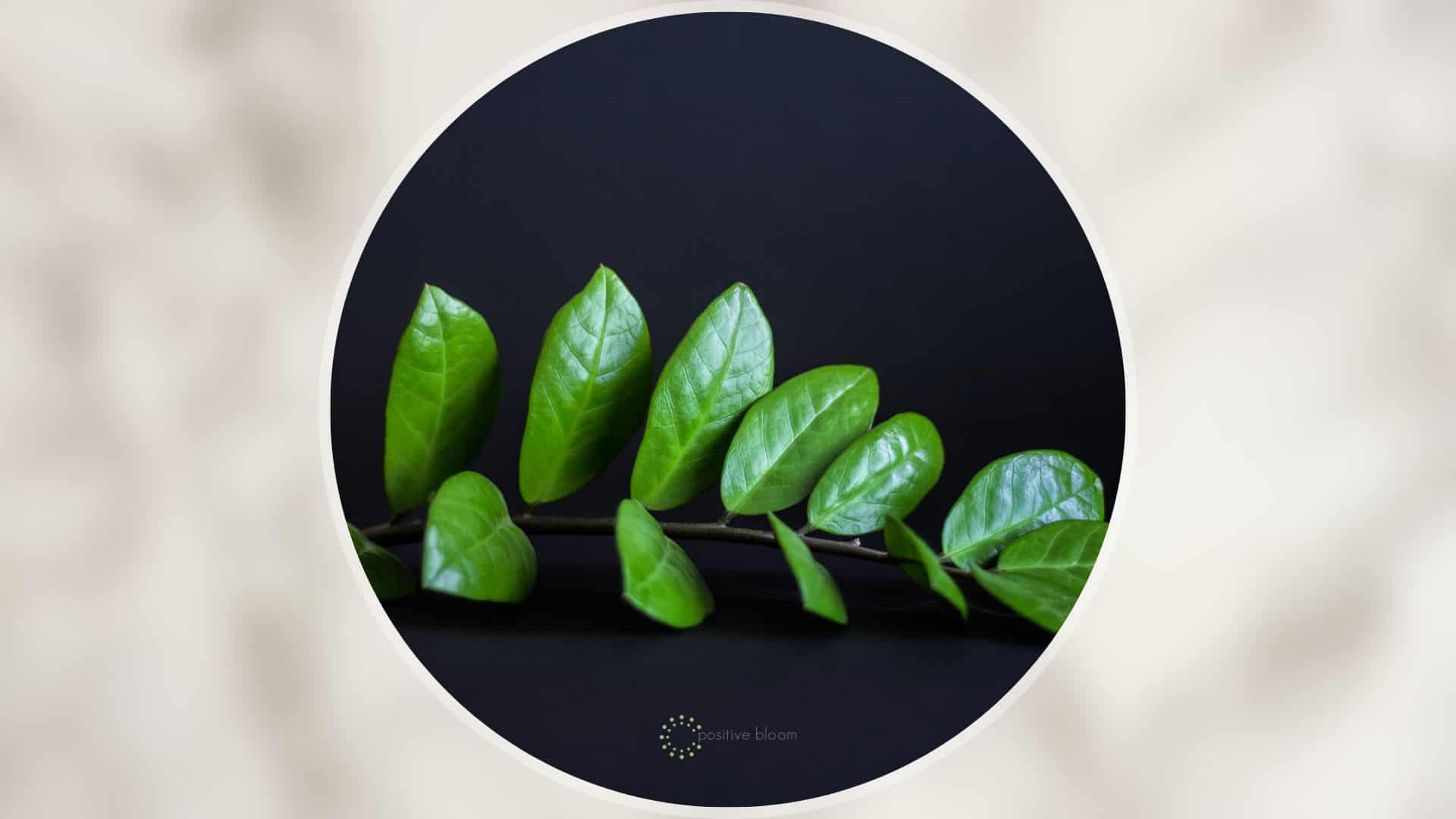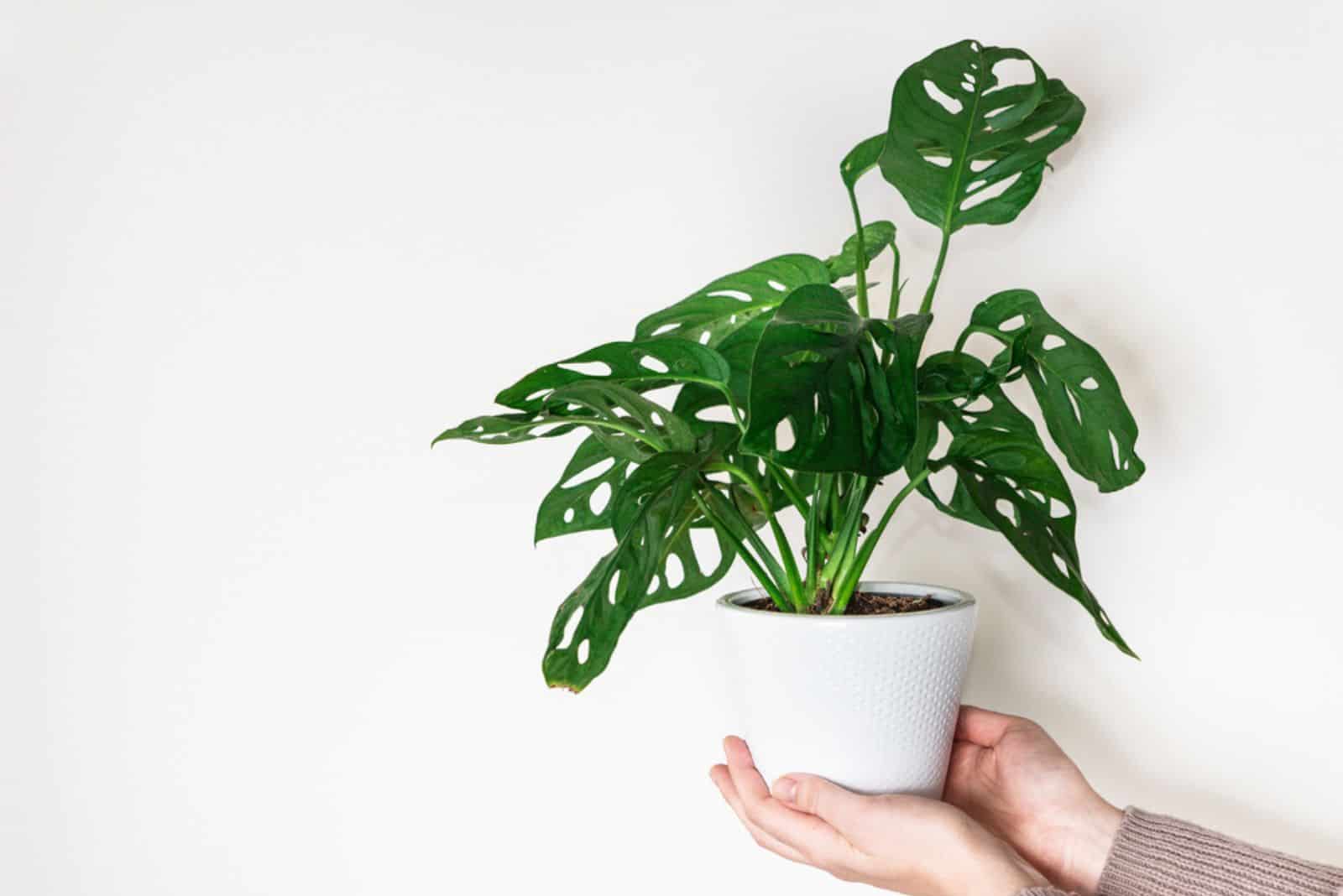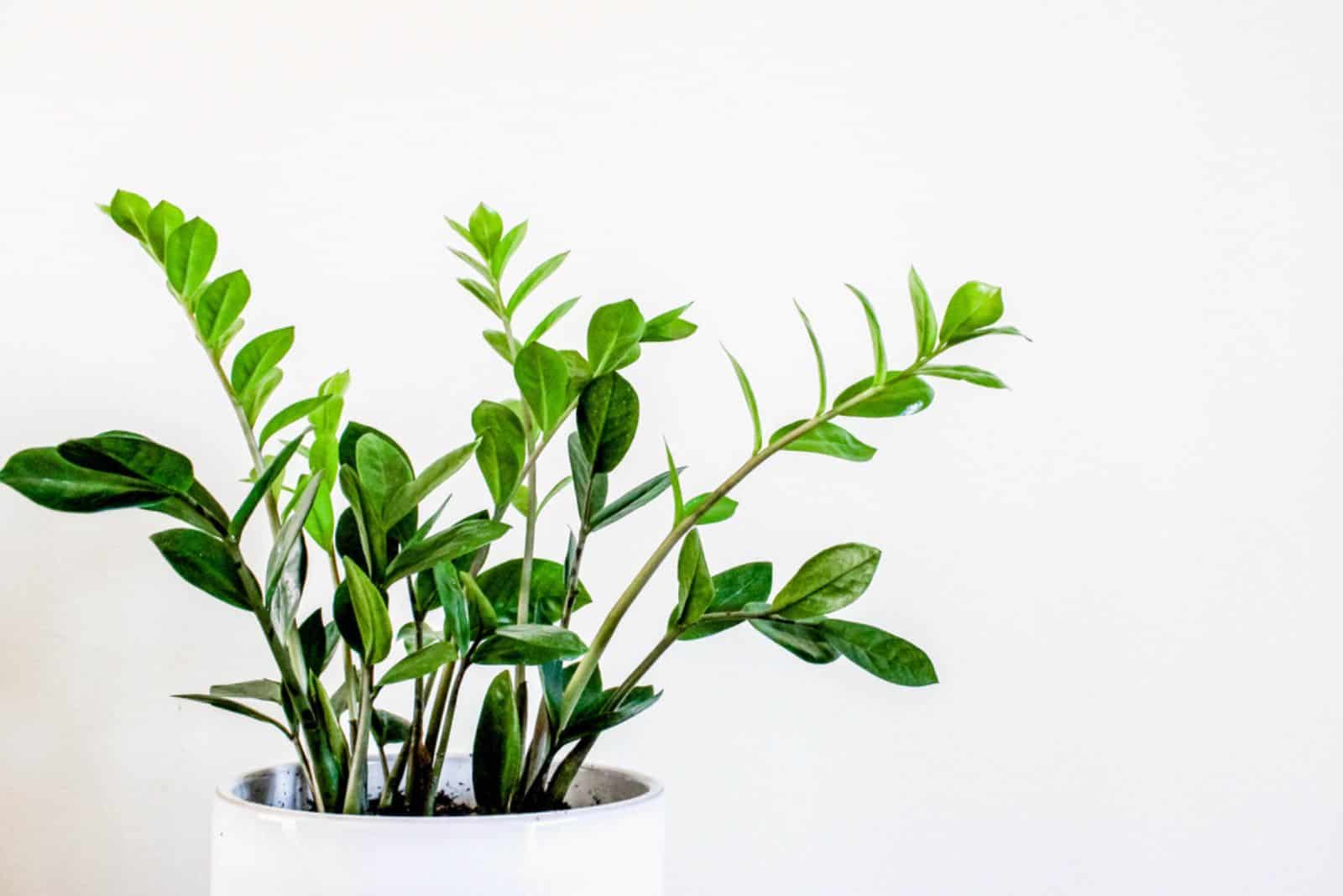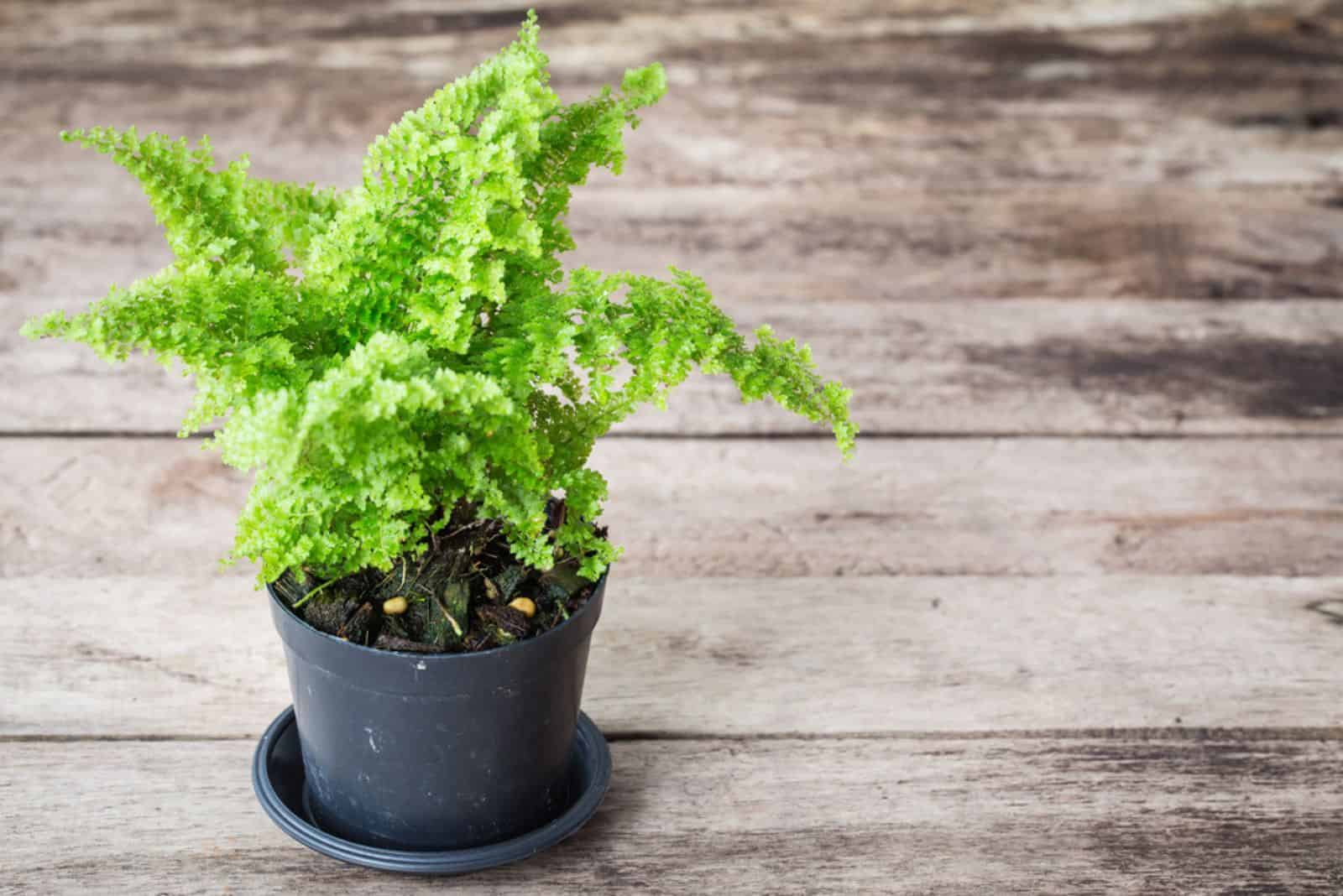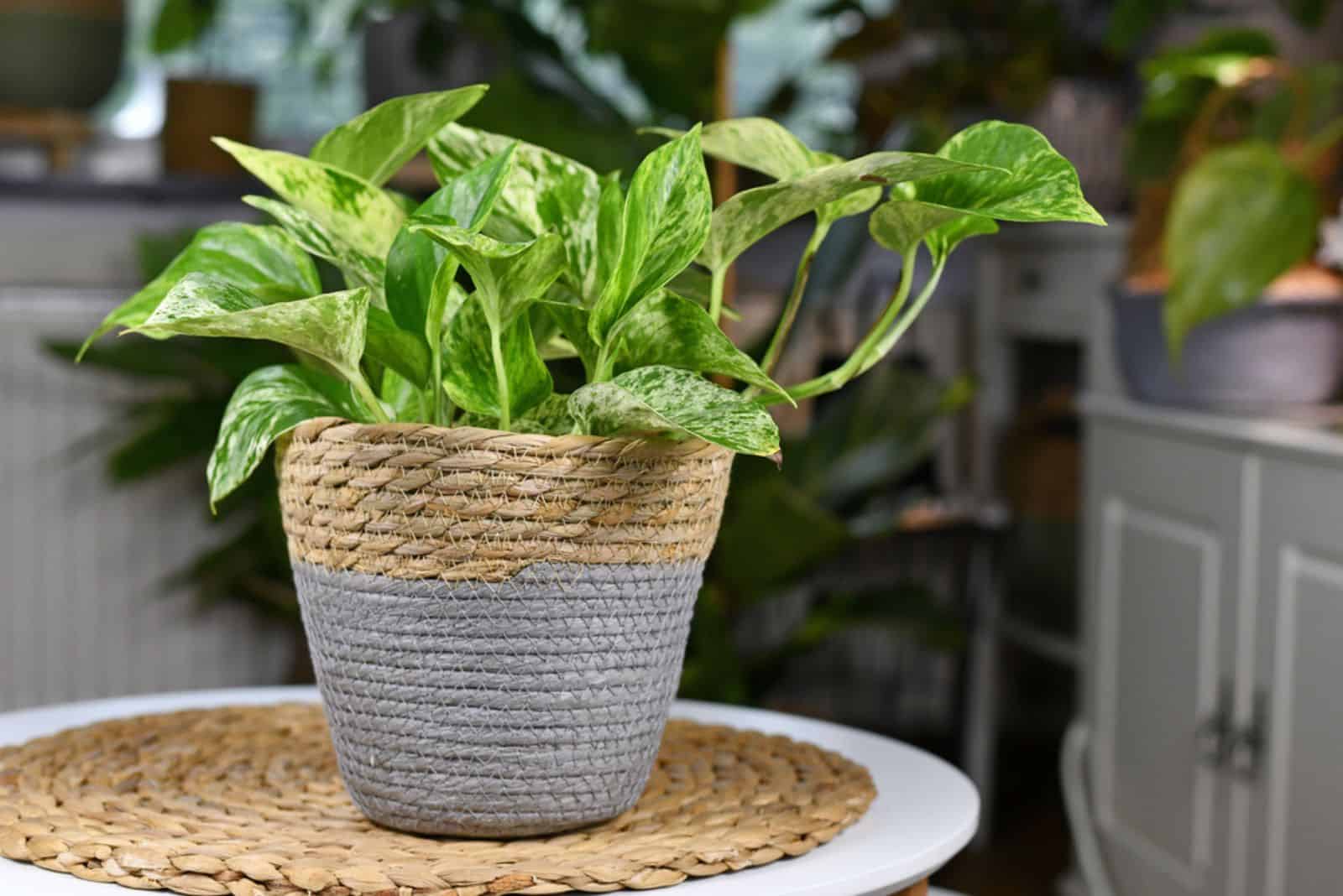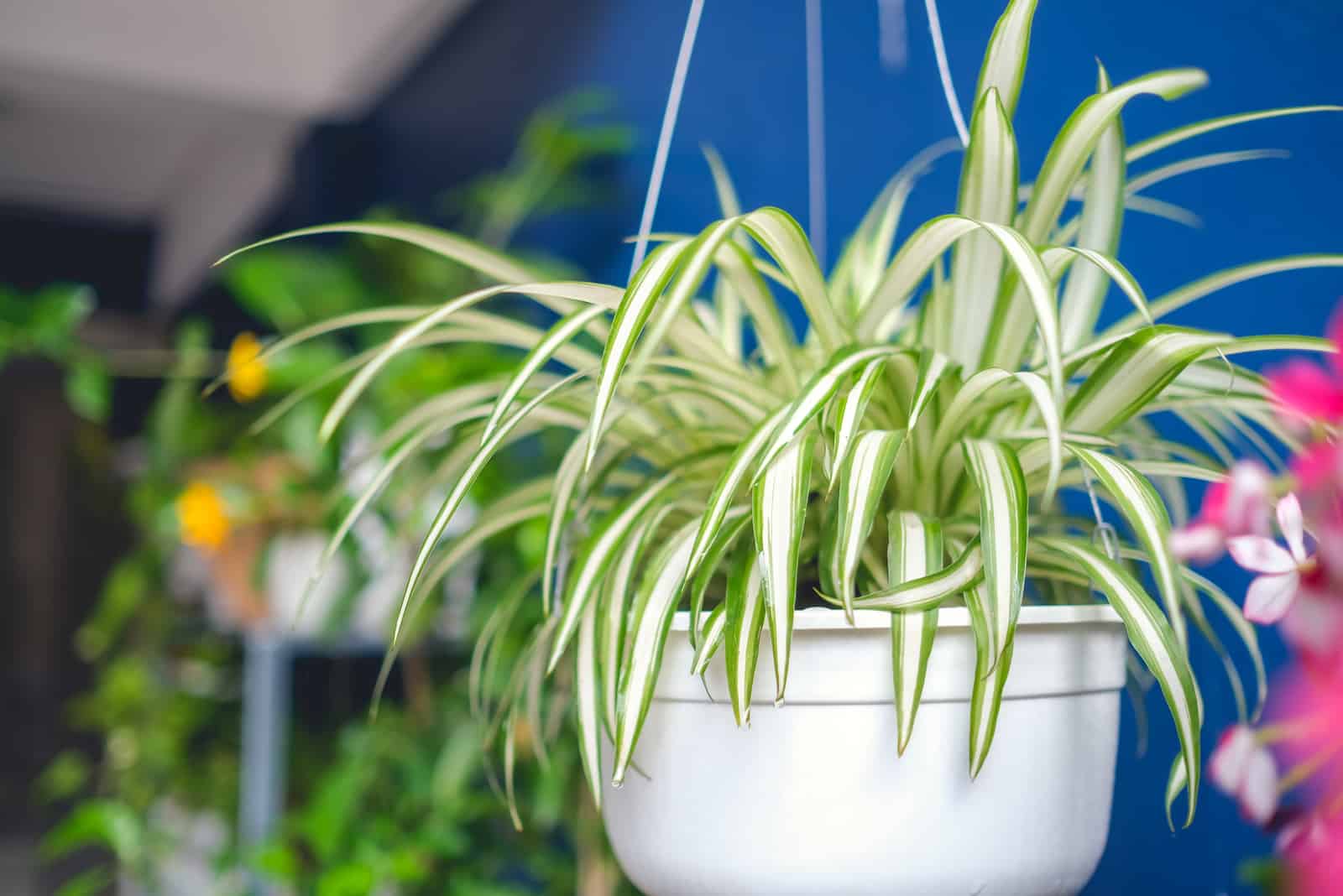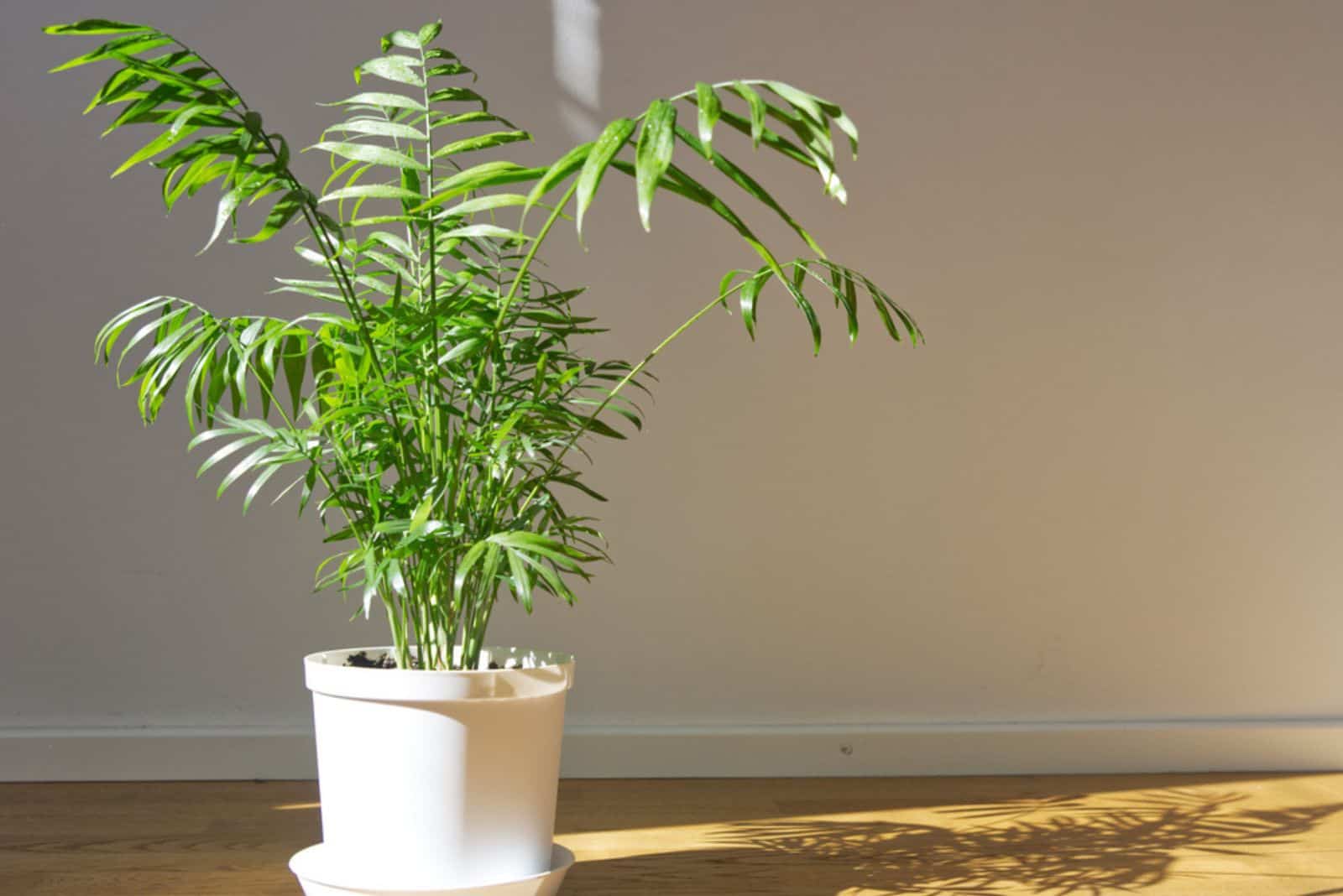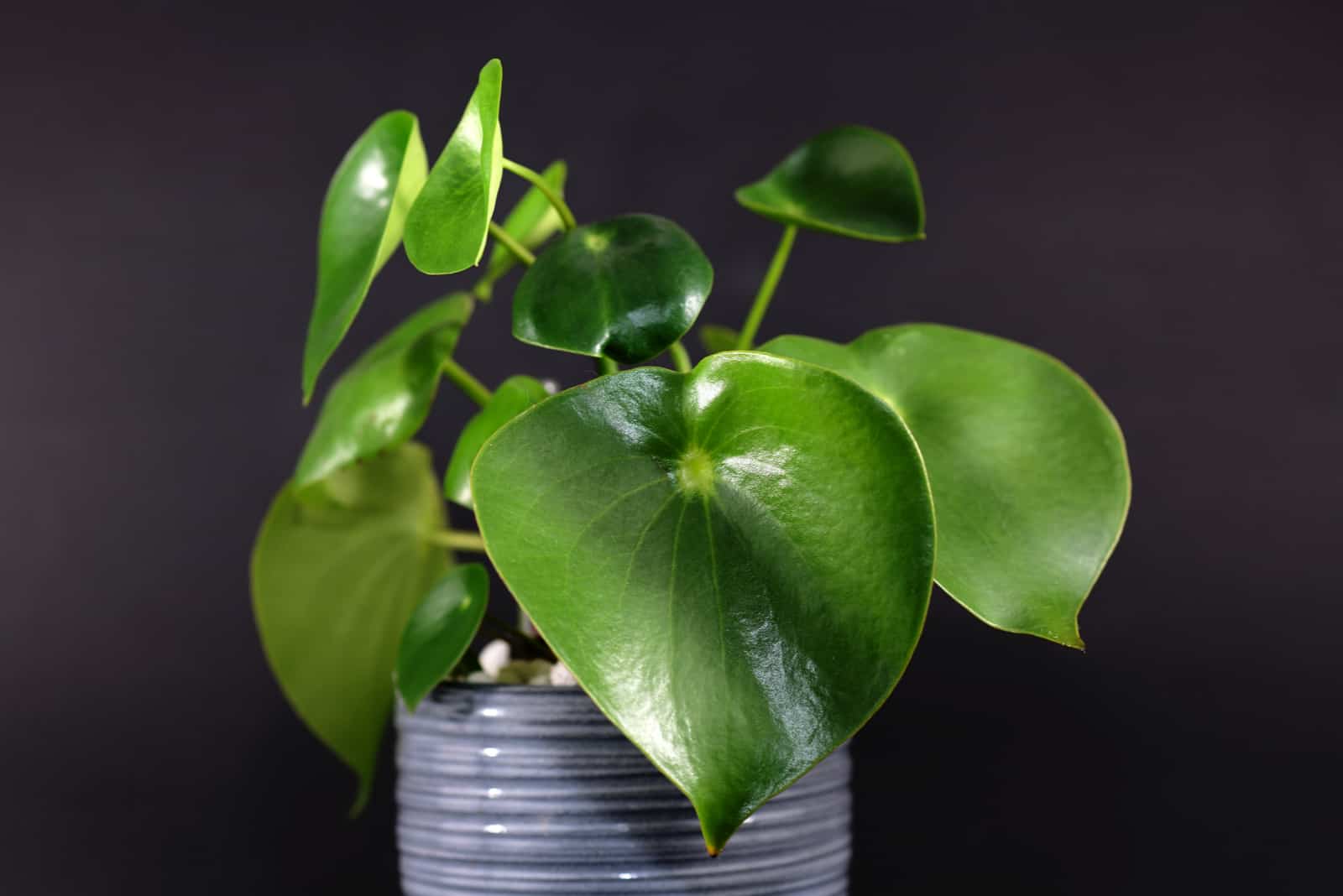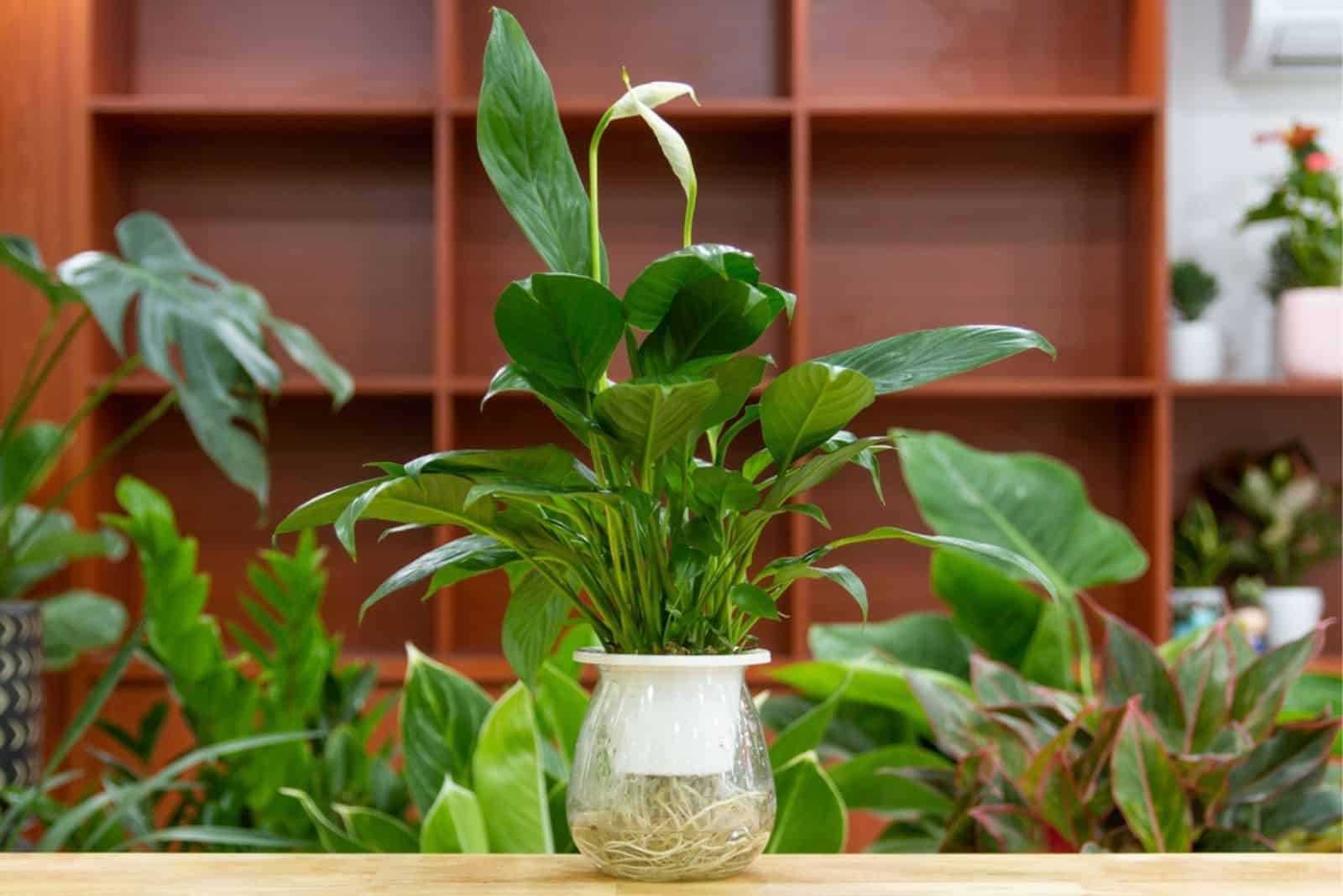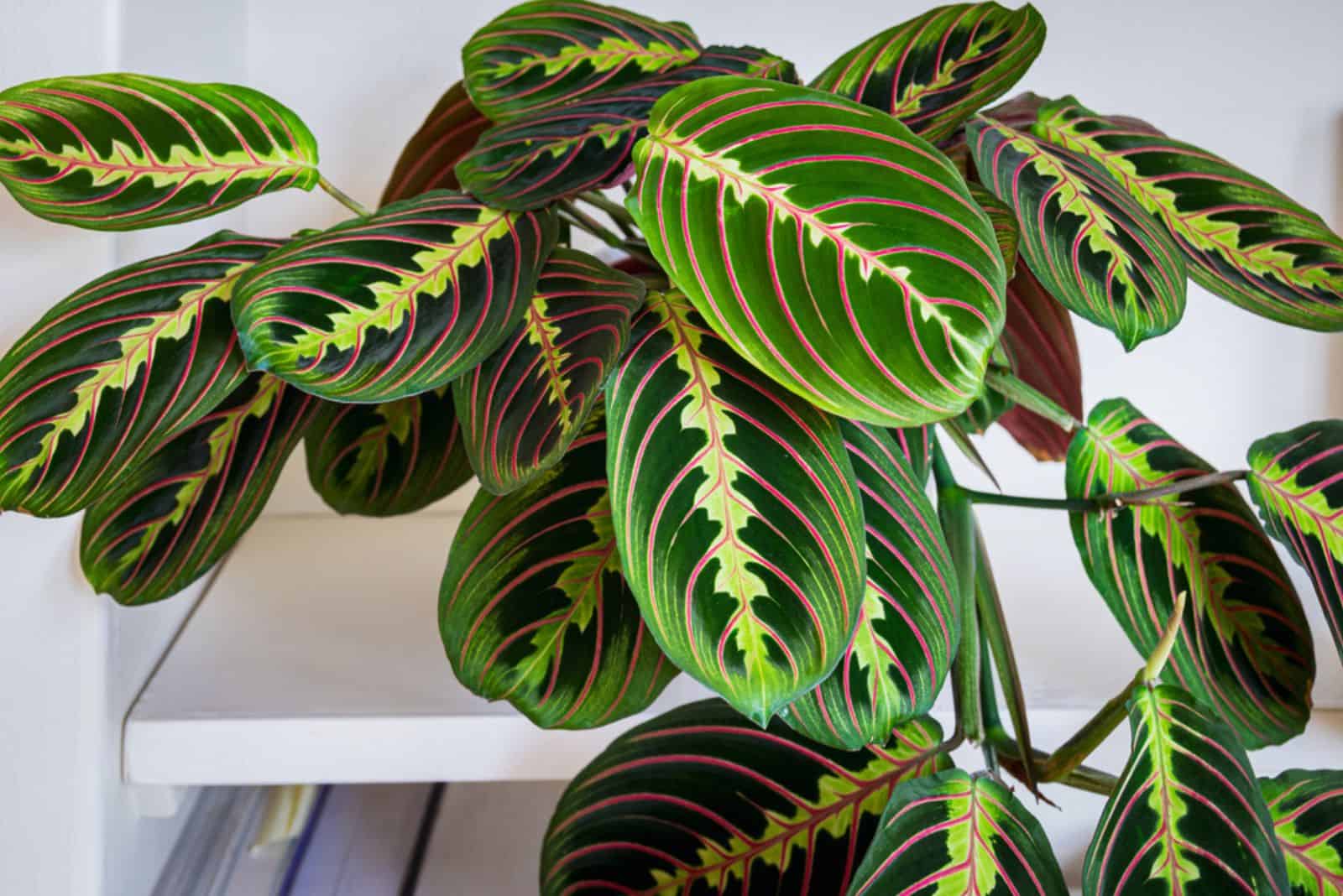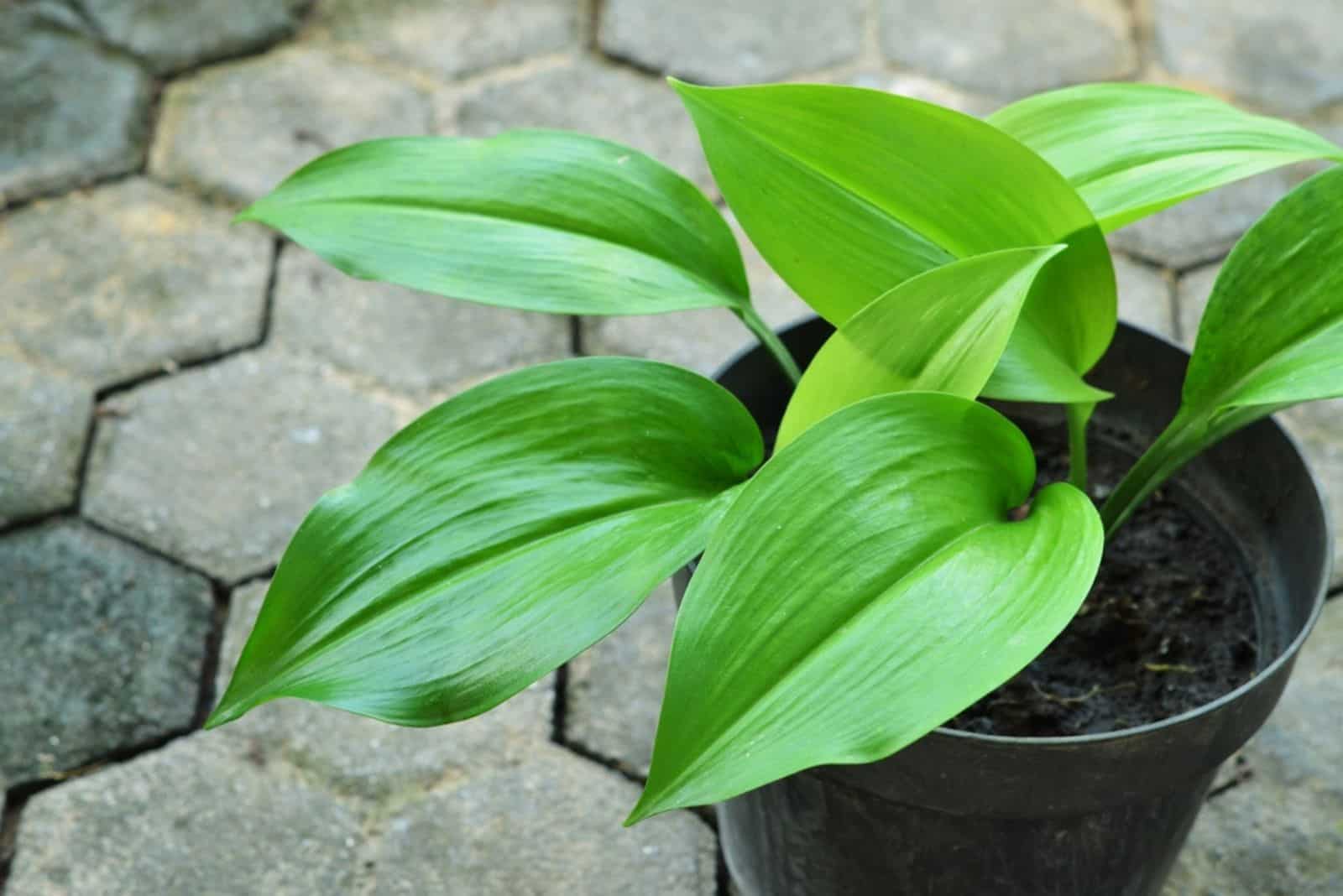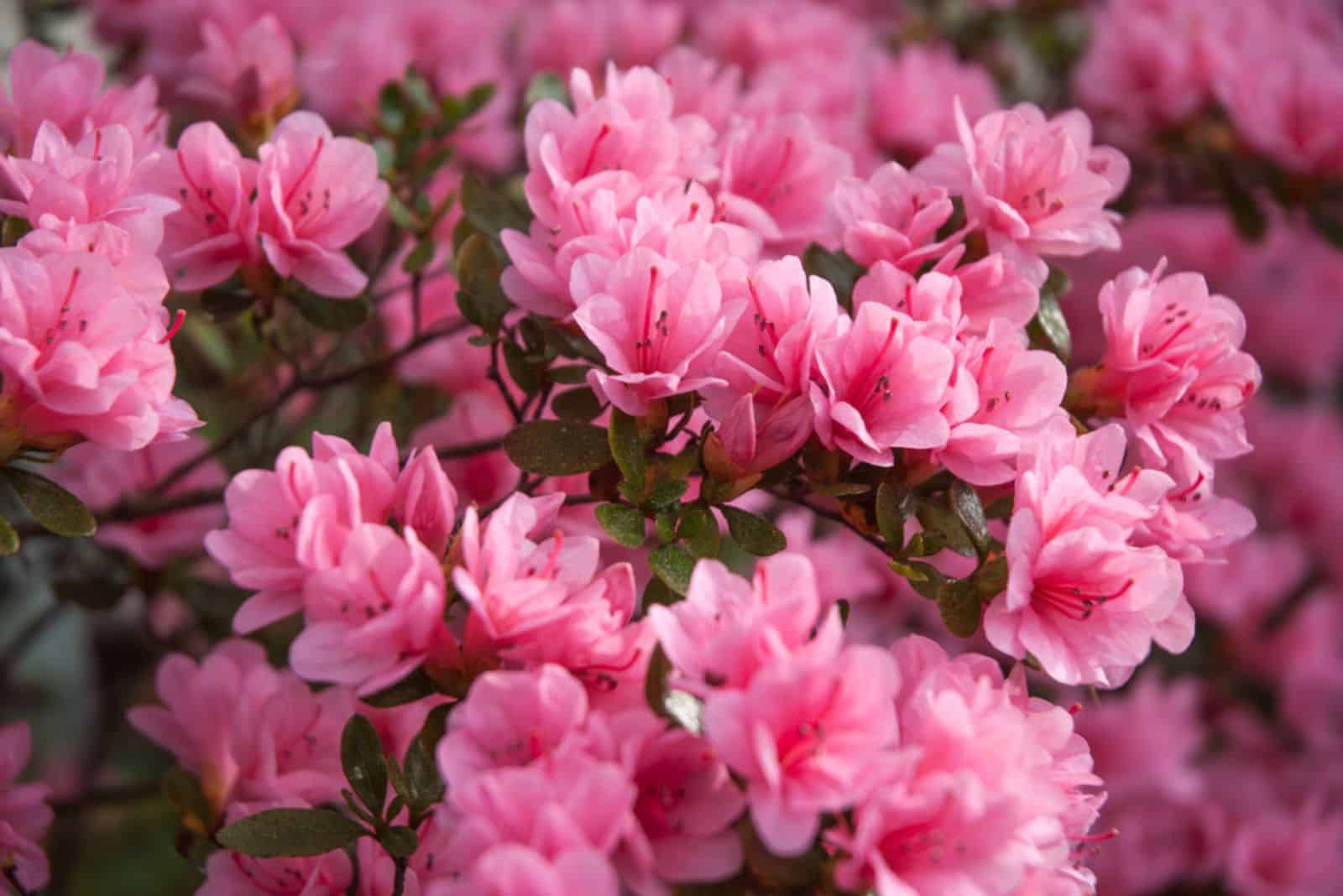Plants in basements?! Seems kinda contradictory and impossible since plants can’t live without light, right?
Yes, it’s true that plants can’t live without light, but some plants require very little light, so we can adjust our basements to meet our plants’ needs.
The majority of plants we cultivate indoors originate from tropical regions, which means they enjoy warmer temperatures and higher humidity.
In today’s article, I’ll show you some incredible basement plants and how to boost up the light levels and warm up the environment so your plants can thrive.
Let’s get started!
A List Of Basement Plants
There are actually many plants you can grow in your basement. Some have massive foliage and some can even produce blossoms.
Here are my top picks:
• Monstera adansonii
• ZZ plant
• Snake Plant
• Maidenhair Fern
• Pothos
Let’s get into detail!
Monstera Adansonii
Monstera adansonii cultivars are very common in indoor cultivation. Like all its Monstera cousins, the adansonii is native to tropical rainforests, where it doesn’t receive direct sunlight.
We can use this feature and adjust our basement apartment so that it mimics rainforest conditions.
If you have a small window in your basement, put your Monstera as close to it as possible. On the other hand, if a natural light source isn’t available you’ll need to purchase artificial lights.
Monstera plants thrive in humid environments, so misting is often required on a daily basis. If you don’t have a lot of spare time, consider investing in a high-quality humidifier; these are definitely a lifesaver for plant growers!
I have to mention that variegated Monstera cultivars, such as the Monstera albo, can’t thrive without plenty of bright indirect sunlight, so they aren’t suitable for basements.
ZZ Plant
The Zamioculcas zamiifolia, better known by its lovely nickname, the ZZ plant, is a common indoor plant with relatively low care requirements.
I have a ZZ in my basement, and I’ll tell you that she seems to love it! I put it next to a small window and thought there was no way it would survive. Well, after three years she’s still happy in that same spot.
Don’t worry if your ZZ doesn’t develop fast – there’s nothing wrong with it; this plant just has a slow growth rate and is dormant during the winter months.
All ZZ plant types are undoubtedly exquisite, but my vote for the most beautiful one goes to the Raven ZZ.
Artificial lights can help you ensure enough light for your ZZ, but you must pay close attention to watering. This is a low-light plant, so it’s very susceptible to overwatering.
Snake Plant
I have an excellent option for growers that love succulents. The Snake plant, also known as the Mother-in-law’s tongue, is a hard-to-kill plant that’s perfect for dark corners and basements.
This is a perfect plant for an office that has no windows, so if your office is in a basement it’s a win-win situation.
Be extra careful with irrigation; the Snake plant doesn’t require much light, and the same goes for water. Always check if your Mother-in-law’s tongue plant is thirsty by inserting your finger in the soil, and if it’s dry, your plant needs watering.
As well as the common Laurentii variety, I also recommend the cheerful Skyline and dwarfish variety, Starfish.
Maidenhair Fern
Every home looks better with a Maidenhair fern on the shelf. This Adiantum plant thrives in a humid environment, so you’ll need to mist it or install a humidifier.
It’s not finicky about light levels, so you can either put it near a window or use grow lights.
There’s one tricky thing about this lovely plant; it thrives in moist potting soil, so you should irrigate it whenever the soil feels dry to the touch.
You can avoid waterlogging the soil by using adequate growing substrate and pots with drainage holes.
One more thing – this Adiantum plant is pretty sensitive to chemicals found in tap water, so either leave it out overnight so they can evaporate or use distilled water or rainwater as safe alternatives.
Pothos
There’s one thing a pothos plant will never forgive you for; exposure to direct sun. Since we are talking about basement plants in this article, a pothos fits the bill perfectly.
You need to irrigate your pothos when the topsoil dries out and keep humidity levels over 50%.
The most popular type of pothos is the Devil’s ivy, aka Epipremnum aureum, and it’s also the most suitable variety for a basement.
Just like with other variegated plant species, I don’t recommend growing a Marble queen pothos due to its high light requirements.
I recommend applying liquid fertilizer during the pothos growing season to boost growth and ensure more nutrients.
Spider Plant
The Airplane plant, also known as the Spider plant, is another excellent option for basements. What I especially like about these plants is how their elongated foliage looks stunning when it cascades down the edges of hanging baskets.
One of the requirements you need to meet if you decide on growing Spider plants is sufficient space. Foliage and spiderettes may take up a lot of space, which is the main reason I recommend growing Airplane plants in hanging baskets.
Since Spider plants grow well in low light conditions, they’re perfect for any basement. Of course, if you don’t have any windows, you’ll need to get artificial lights.
Even though these plants can withstand lower temperatures, they are intolerant to lower humidity conditions.
Installing a humidifier, misting, or putting a humidity tray below the pot are all methods that can help you raise humidity levels in your basement.
You’ll also need to feed your Airplane plant with all-purpose fertilizer approximately twice a month during the growing season.
Parlor Palm
When I think of palms, I see brightness and warmth, and that’s probably the reason I have so many of them in my home!
Believe it or not, Parlor palms don’t enjoy high temperatures, and their light requirements are pretty low.
Your basement will look amazing and resemble a tropical environment, which is pretty uncommon when it comes to below ground environments.
Although many people think palms take up a lot of space, the Parlor cultivar typically reaches 4 feet tall. You can control size and shape by pruning, but make sure to follow pruning rule number 1: never remove more than ⅓ of the plant at a time!
Lucky Bamboo
Basements often look scary and dark. But what if told you that you can grow a plant that is thought to bring luck and doesn’t require a lot of light?
Lucky bamboo is all that and more. This Dracaena species adapts well to various growing conditions, though they are very sensitive to overwatering.
If you decide to grow a Lucky bamboo plant in your basement, always check the moisture level content before you irrigate. Lower light levels decrease water evaporation rate, which means it’s pretty easy to overwater in this kind of environment.
I recommend pruning your Lucky bamboo when it exceeds 1 foot tall, and braiding the stems for an even more stunning appearance.
Aglaonema
It may be hard to identify the Aglaonema species, but no matter which one you choose, it will make your basement prettier.
You can go with the most common commutatum species, or spice things up with Red valentine or Red anjamani specimens.
Often called Chinese evergreen plants, this magnificent species is frequently found in plant collections worldwide.
Their requirements are low, especially when it comes to light. Variegated cultivars will need more sun exposure, so it’s better to go with greener, non-variegated ones.
An old friend of mine once told me that the only thing I need to make sure of is that I ‘hide’ my Aglaonemas from direct sunlight.
The rest is history; two Aglaonemas adorn my basement now!
Peperomia
Peperomias are lovely and have many benefits; they are air-purifying plants, have low care requirements, are easily propagated, and look incredible.
You can choose from a wide range of varieties, but my vote goes to the lovely Peperomia rotundifolia. One of the best things about this variety is the trailing growth habit. Your basement will definitely look better and won’t lack green color any time soon.
Peperomias flourish in bright indirect light, but lower light conditions won’t harm them. They’ll quickly adapt to such conditions, and grow perfectly unless you expose them to direct sunlight all of a sudden.
If you are using artificial lights for your Peperomias, don’t worry if it grows really slowly. Even though the growth rate significantly decreases, these plants will be happy and healthy for a long time.
Peace Lily
The majority of images of offices and basements on Instagram or Facebook have one thing in common; a plant on the desk or shelf. Interestingly, one of the most common plants used in such images is the Peace lily!
I’m sure you’ll agree if I say that it’s pretty unusual to see a flowering plant in darker spaces, but what you see on the Spathiphyllum plant isn’t the ‘real’ flower, but rather a leaf bract.
Since it looks exactly like it produces a white flower, the Peace lily is a perfect plant for growers who long for a flowering plant in their basements.
The Spathiphyllum isn’t fussy over the light level as long as it’s not direct.
There are two drawbacks of this plant; it’s considered toxic and requires higher temperatures to thrive. If you keep it out of reach of toddlers and pets, and increase temperatures a little bit, you’ll have nothing to worry about.
Prayer Plant
Another plant that’ll perfectly fit into your basement is the Prayer plant. I need to tell you that the term “Prayer plant” refers to both the Calathea and Maranta species.
This means you have many options to choose from, such as Calathea ornata, Calathea roseopicta, and Maranta leuconeura erythrophylla, to name just a few.
Just like all species from this list, Prayer plants can’t tolerate direct light. Placing them close to windows or growing them under artificial lights is the best way to encourage their development.
There’s one catch with these plants; they tend to lose a little bit of color in low light conditions, so many growers think that something is wrong.
Don’t worry if it happens to your Prayer plant because it’s just a response to low light; its health isn’t actually affected.
The amount of green hue that stays on the foliage is still enough for photosynthesis, and the Prayer plant still looks breathtaking.
Cast Iron Plant
Well, the name says it all! Cast iron plants quickly adapt to their surroundings; as long as you don’t expose the plant to direct sun, it will grow just fine.
If you don’t like plants with small leaves, the Cast iron plant is perfect for you! This plant produces large leaves, and you can get a compact shape if you prune them.
Keep the soil moist and feed your Cast iron plant monthly during the growing season to get the best results.
Azalea
The icing on the cake! Azaleas are flowering plants that will grow perfectly in your basement even if they don’t receive bright light during the day.
It’ll greatly benefit from the morning sun, so place it on a windowsill if you have one. Artificial lights can help you if you don’t have a natural light source.
Interestingly, Azalea species are also perfect moisture-absorbing bathroom plants.
They need a lot of water to produce blossoms, but you should never let the roots sit in water.
How To Keep Plants Warm In A Basement?
Since all the plants we mentioned above are native to tropical environments, their temperature requirements are pretty high.
There’s one device that can help you fix the issue – a heating mat. It will provide enough warmth for your houseplants and you’ll avoid freezing.
Remember, these plants aren’t cold-tolerant, so be extra careful with temperatures.
Never put your indoor plants near fireplaces, radiators, or heating vents. This is one of the easiest ways to kill houseplants. The same applies to cold drafts.
Wrapping Up
If you live in a basement apartment, don’t think you can’t keep your plants there. Not every plant thrives in such conditions, but luckily there are some.
You’ve seen my list of perfect basement plants, and I hope you found one you like.
If you are a novice plant grower, I recommend Snake plants due to their lower water requirements. If you would like to add plants with larger foliage, the Monstera adansonii or Cast iron plant are better choices.
No matter which species you choose, I’m sure you’ll take good care of them. Please pay attention to toxicity, especially if you have toddlers and pets.
Until next time!

